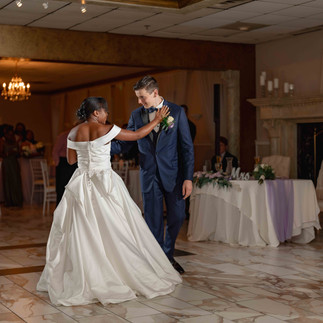Here are some tips to help you capture beautiful indoor wedding photos:
- George Verdzadze

- Sep 16, 2023
- 2 min read
Updated: Sep 29, 2023
1. **Visit the Venue in Advance**: Familiarize yourself with the indoor wedding space before the wedding day. Take note of the available natural and artificial lighting, architectural features, and potential shooting locations.

2. **Use Fast Lenses for wedding photography**: Invest in fast prime lenses (e.g., f/1.4 or f/1.8) that can handle low light conditions. They allow for wider apertures, which help in achieving creamy background bokeh and capturing more light.
3. **Control ISO**: Be prepared to raise your ISO settings to maintain a fast shutter speed in low-light environments. Modern cameras handle higher ISO settings well, reducing noise.
4. **Stabilization**: Consider using image stabilization, whether it's in your lens or camera body, to reduce the effects of camera shake when shooting in low light.
5. **White Balance**: Pay attention to the white balance settings. Indoor lighting can have various color temperatures, so adjust your white balance to match the lighting conditions for accurate color reproduction.
6. **Off-Camera Flash**: As mentioned earlier, off-camera flash can be a lifesaver for indoor photography. It allows for more creative control over lighting.
7. **Natural Light**: If possible, utilize available natural light sources such as windows, doors, or skylights. Soft, diffused natural light can create stunning portraits.
8. **Candid Wedding Moments**: Capture candid moments, emotions, and reactions of guests. These authentic moments often make for memorable shots.
9. **Compose Creatively**: Experiment with different angles, perspectives, and compositions to add variety to your shots. Use leading lines and framing techniques to create visually appealing images.
10. **Details Matter**: Don't forget to capture the small details that make the day unique, such as the wedding rings, table settings, floral arrangements, and decorations.
Here are some tips to help you capture beautiful indoor wedding photos.
Remember that indoor wedding photography often requires adaptability and quick decision-making due to changing lighting conditions. Practice and preparation are key to success in capturing beautiful moments indoors.





















Comments